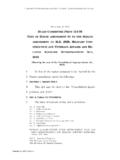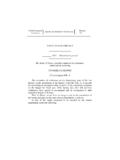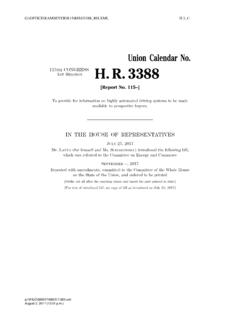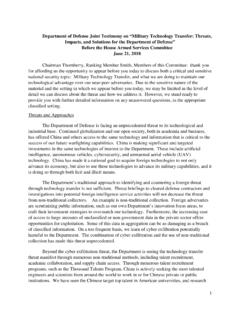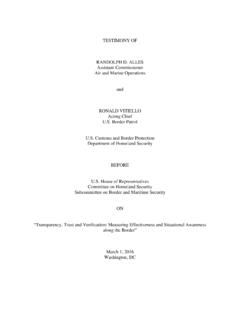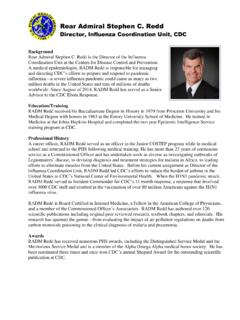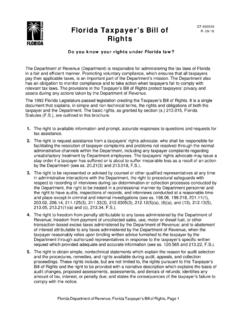Transcription of JOINT EXPLANATORY STATEMENT OF THE COMMITTEE OF …
1 1 JOINT EXPLANATORY STATEMENT OF THE COMMITTEE OF CONFERENCE The managers on the part of the House and the Senate at the conference on the disagreeing votes of the two Houses on the amendment of the Senate to the bill ( 1), the Tax Cuts and Jobs Act, submit the following JOINT STATEMENT to the House and the Senate in explanation of the effect of the action agreed upon by the managers and recommended in the accompanying conference report: The Senate amendment struck all of the House bill after the enacting clause and inserted a substitute text. The House recedes from its disagreement to the amendment of the Senate with an amendment that is a substitute for the House bill and the Senate amendment. The differences between the House bill , the Senate amendment, and the substitute agreed to in conference are noted below, except for clerical corrections, conforming changes made necessary by agreements reached by the conferees, and minor drafting and clarifying changes.
2 2 TITLE I INDIVIDUAL TAX PROVISIONS A. Reduction and Simplification of Individual Income Tax Rates (sec. 1001 of the House bill , sec. 11001 of the Senate amendment, and sec. 1 of the Code) Present Law In general To determine regular tax liability, an individual taxpayer generally must apply the tax rate schedules (or the tax tables) to his or her regular taxable income. The rate schedules are broken into several ranges of income, known as income brackets, and the marginal tax rate increases as a taxpayer s income increases. Tax rate schedules Separate rate schedules apply based on an individual s filing status. For 2017, the regular individual income tax rate schedules are as follows: Table 1. Federal Individual Income Tax Rates for 20171 If taxable income is: Then income tax equals: Single Individuals Not over $9,325 10% of the taxable income Over $9,325 but not over $37,950 $ plus 15% of the excess over $9,325 Over $37,950 but not over $91,900 $5, plus 25% of the excess over $37,950 Over $91,900 but not over $191,650 $18, plus 28% of the excess over $91,900 Over $191,650 but not over $416,700 $46, plus 33% of the excess over $191,650 Over $416,700 but not over $418,400 $120, plus 35% of the excess over $416,700 Over $418,400 $121, plus of the excess over $418,400 Heads of Households Not over $13,350 10% of the taxable income Over $13,350 but not over $50,800 $1,335 plus 15% of the excess over $13,350 Over $50,800 but not over $131,200 $6, plus 25% of the excess over $50,800 Over $131,200 but not over $212,500 $27, plus 28% of the excess over $131,200 Over $212,500 but not over $416,700 $49, plus 33% of the excess over $212,500 3 If taxable income is.
3 Then income tax equals: Over $416,700 but not over $444,550 $117, plus 35% of the excess over $416,700 Over $444,550 $126,950 plus of the excess over $444,550 Married Individuals Filing JOINT Returns and Surviving Spouses Not over $18,650 10% of the taxable income Over $18,650 but not over $75,900 $1,865 plus 15% of the excess over $18,650 Over $75,900 but not over $153,100 $10, plus 25% of the excess over $75,900 Over $153,100 but not over $233,350 $29, plus 28% of the excess over $153,100 Over $233,350 but not over $416,700 $52, plus 33% of the excess over $233,350 Over $416,700 but not over $470,700 $112,728 plus 35% of the excess over $416,700 Over $470,700 $131,628 plus of the excess over $470,700 Married Individuals Filing Separate Returns Not over $9,325 10% of the taxable income Over $9,325 but not over $37,950 $ plus 15% of the excess over $9,325 Over $37,950 but not over $76,550 $5, plus 25% of the excess over $37.
4 950 Over $76,550 but not over $116,675 $14, plus 28% of the excess over $76,550 Over $116,675 but not over $208,350 $26, plus 33% of the excess over $116,675 Over $208,350 but not over $235,350 $56,364 plus 35% of the excess over $208,350 Over $235,350 $65,814 plus of the excess over $235,350 Estates and Trusts Not over $2,550 15% of the taxable income Over $2,550 but not over $6,000 $ plus 25% of the excess over $2,550 Over $6,000 but not over $9,150 $1,245 plus 28% of the excess over $6,000 Over $9,150 but not over $12,500 $2,127 plus 33% of the excess over $9,150 Over $12,500 $3, plus of the excess over $12,500 1 Rev. Proc. 2016-55, 2016-45 707, sec. 4 Unearned income of children Special rules (generally referred to as the kiddie tax ) apply to the net unearned income of certain Generally, the kiddie tax applies to a child if: (1) the child has not reached the age of 19 by the close of the taxable year, or the child is a full-time student under the age of 24, and either of the child s parents is alive at such time; (2) the child s unearned income exceeds $2,100 (for 2017); and (3) the child does not file a JOINT The kiddie tax applies regardless of whether the child may be claimed as a dependent by either or both parents.
5 For children above age 17, the kiddie tax applies only to children whose earned income does not exceed one-half of the amount of their support. Under these rules, the net unearned income of a child (for 2017, unearned income over $2,100) is taxed at the parents tax rates if the parents tax rates are higher than the tax rates of the The remainder of a child s taxable income ( , earned income, plus unearned income up to $2,100 (for 2017), less the child s standard deduction) is taxed at the child s rates, regardless of whether the kiddie tax applies to the child. For these purposes, unearned income is income other than wages, salaries, professional fees, other amounts received as compensation for personal services actually rendered, and distributions from qualified disability In general, a child is eligible to use the preferential tax rates for qualified dividends and capital The kiddie tax is calculated by computing the allocable parental tax.
6 This involves adding the net unearned income of the child to the parent s income and then applying the parent s tax rate. A child s net unearned income is the child s unearned income less the sum of (1) the minimum standard deduction allowed to dependents ($1,050 for 20176), and (2) the greater of (a) such minimum standard deduction amount or (b) the amount of allowable itemized deductions that are directly connected with the production of the unearned The allocable parental tax equals the hypothetical increase in tax to the parent that results from adding the child s net unearned income to the parent s taxable If the child has net capital gains or qualified dividends, these items are allocated to the parent s hypothetical taxable income according to the ratio of net unearned income to the child s total unearned income. If a 1 Sec. 1(g). Unless otherwise stated, all section references are to the Internal Revenue Code of 1986, as amended (the Code ).
7 2 Sec. 1(g)(2). 3 Special rules apply for determining which parent s rate applies where a JOINT return is not filed. 4 Sec. 1(g)(4) and sec. 911(d)(2). 5 Sec. 1(h). 6 Sec. of Rev. Proc. 2016-55, supra. 7 Sec. 1(g)(4). 8 Sec. 1(g)(3). 5 parent has more than one child subject to the kiddie tax, the net unearned income of all children is combined, and a single kiddie tax is calculated. Each child is then allocated a proportionate share of the hypothetical increase, based upon the child s net unearned income relative to the aggregate net unearned income of all of the parent s children subject to the tax. Generally, a child must file a separate return to report his or her In such case, items on the parents return are not affected by the child s income, and the total tax due from the child is the greater of: 1. The sum of (a) the tax payable by the child on the child s earned income and unearned income up to $2,100 (for 2017), plus (b) the allocable parental tax on the child s unearned income, or 2.
8 The tax on the child s income without regard to the kiddie tax Under certain circumstances, a parent may elect to report a child s unearned income on the parent s Capital gains rates In general In the case of an individual, estate, or trust, any adjusted net capital gain which otherwise would be taxed at the 10- or 15-percent rate is not taxed. Any adjusted net capital gain which otherwise would be taxed at rates over 15-percent and below percent is taxed at a 15-percent rate. Any adjusted net capital gain which otherwise would be taxed at a rate is taxed at a 20-percent rate. The unrecaptured section 1250 gain is taxed at a maximum rate of 25 percent, and 28-percent rate gain is taxed at a maximum rate of 28 percent. Any amount of unrecaptured section 1250 gain or 28-percent rate gain otherwise taxed at a 10- or 15-percent rate is taxed at the otherwise applicable rate. In addition, a tax is imposed on net investment income in the case of an individual, estate, or trust.
9 In the case of an individual, the tax is percent of the lesser of net investment income, which includes gains and dividends, or the excess of modified adjusted gross income over the threshold amount. The threshold amount is $250,000 in the case of a JOINT return or surviving spouse, $125,000 in the case of a married individual filing a separate return, and $200,000 in the case of any other individual. 9 Sec. 1(g)(6). See Form 8615, Tax for Certain Children Who Have Unearned Income. 10 Sec. 1(g)(1). 11 Sec. 1(g)(7). 6 Definitions Net capital gain In general, gain or loss reflected in the value of an asset is not recognized for income tax purposes until a taxpayer disposes of the asset. On the sale or exchange of a capital asset, any gain generally is included in income. Net capital gain is the excess of the net long-term capital gain for the taxable year over the net short-term capital loss for the year.
10 Gain or loss is treated as long-term if the asset is held for more than one year. A capital asset generally means any property except (1) inventory, stock in trade, or property held primarily for sale to customers in the ordinary course of the taxpayer s trade or business, (2) depreciable or real property used in the taxpayer s trade or business, (3) specified literary or artistic property, (4) business accounts or notes receivable, (5) certain publications, (6) certain commodity derivative financial instruments, (7) hedging transactions, and (8) business supplies. In addition, the net gain from the disposition of certain property used in the taxpayer s trade or business is treated as long-term capital gain. Gain from the disposition of depreciable personal property is not treated as capital gain to the extent of all previous depreciation allowances. Gain from the disposition of depreciable real property is generally not treated as capital gain to the extent of the depreciation allowances in excess of the allowances available under the straight-line method of depreciation.
